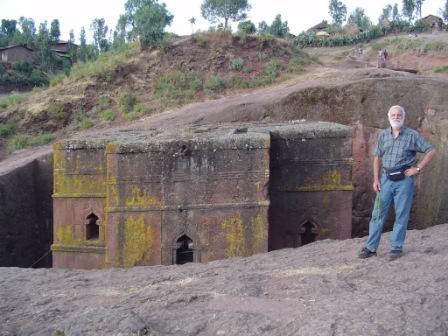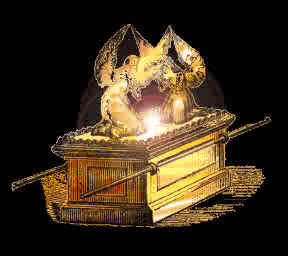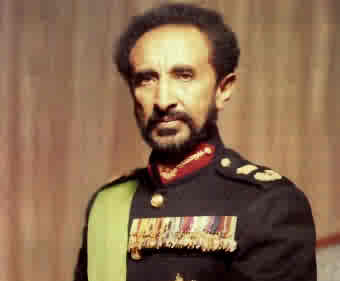|
restoring our biblical and constitutional foundations
|
Reaching the Orthodox: The Ethiopian Orthodox Church System
The Gospel of Jesus Christ was brought to Ethiopia
in the year 315, shortly after Constantine established Christendom (see
the last article). Ethiopians brought two white men up from the Red Sea
into the Ethiopian mountains to meet the Ethiopian Emperor. These white
men told the Emperor the Gospel, he accepted the truth, and the men sent
to the Bishop of Alexandria (Egypt) for religious leaders to teach the
Ethiopians. As the centuries passed, Christianity in Ethiopia expanded,
and the
 Ethiopian
church institution followed the route set by the Egyptian church: she
became Orthodox, under the Patriarch of Egypt. (Sometimes the Orthodox
church in Egypt is called “Coptic Orthodox”. As with previous reports,
for the purposes of this discussion, “church” refers to the
church-institution/organization, and “Church” refers to the body of true
believers; “church” is a man-made structure of religion, whereas
“Church” is a spiritual work done by the Lord Jesus.)
Ethiopian
church institution followed the route set by the Egyptian church: she
became Orthodox, under the Patriarch of Egypt. (Sometimes the Orthodox
church in Egypt is called “Coptic Orthodox”. As with previous reports,
for the purposes of this discussion, “church” refers to the
church-institution/organization, and “Church” refers to the body of true
believers; “church” is a man-made structure of religion, whereas
“Church” is a spiritual work done by the Lord Jesus.)
Nine monks came from Syria to Ethiopia. Their influence upon the church institution in Ethiopia was great in a number of aspects. First, they introduced monastic living; this is still a very strong component of the Ethiopian Orthodox church. Secondly, although branded as heretics by the Council of Chalcedon, they spread the belief that Jesus had only one nature, a fusion of his human and divine natures. He was not completely human and completely divine; instead He was something in-between. Thirdly, these monks translated the Scriptures into Ge’ez, which was the Ethiopian language. Even today, worship in the Orthodox church is done in Ge’ez, though it is now a dead language and no Ethiopian can understand it.
In the twelfth century, King Lalibela had 10 churches built out of solid rock. Each church is of one piece. Truly, these churches are an engineering marvel and are rightly called one of the wonders of the world!

As with the Roman Catholic church institution in
Europe, the Ethiopian Orthodox church had a period of “Dark Ages.” During
these centuries she retreated into the high mountains and became ingrown.
At this time numerous superstitions were added to her teachings; tradition
upon tradition burdened the people in the church. Most of these
superstitions and traditions are still practiced in the church; it is an
extremely burdensome religion, full of fear, uncertainty, and demands.
One of these teachings is that the original Ark of the Covenant (which Moses built in the Wilderness) is housed in a monastery in the city of Aksum, in the far northern part of Ethiopia. No one except a handful of monks has ever claimed to have seen this ark; it is shrouded in secrecy. But each local church has its own replica of the ark. Within the church building there is a heavy curtain separating their replica of the ark from the people. And every year they have elaborate ceremonies involving these arks, reenacting the return of the ark to the Temple.
The Orthodox church has established many prescribed fasts for its followers. Each fast is regimented as to time and diet. Some public restaurants offer only those food items accommodated by the current fast; some have two menus – one fasting, and one non-fasting.
In the Orthodox church the Scriptures are mingled with traditions and superstitions, the Old and New Testaments are jumbled together, and all-in-all the result is a very complicated, confused doctrinal system. It is so complicated that the Orthodox people cannot explain their doctrine; they simply follow their priests. Their allegiance to and trust in their priests is phenomenal. The priest is their spiritual security blanket. Few people read their Bible, and no one understands the church services because they are conducted in the ancient Ge’ez language. They simply do what their local priest tells them to do, no matter what.
As with other Eastern countries, the Ethiopian Orthodox church and her emperors were very closely associated; they worked for and with each other. In Ethiopia they fought against the advance of Islam, but in the past two centuries, both Islam and paganism have increased significantly in Ethiopia, especially in the eastern and southern regions.
Only 50 years ago the Ethiopian Orthodox church
separated from the Egyptian Coptic church. Now Ethiopia has her own
Patriarch. The last Monarch of Ethiopia, King Haile Selassie, actively
promoted the work of Protestant missionaries. These missionaries found
fertile spiritual ground among the southern tribes, where they had been
living in fear of Satan for generations, bound up in barbaric worship
through witch doctors. But in the northern tribes of Ethiopia, the
spiritual ground was hard and resistant. The hierarchy of the Orthodox
church actively opposed the Protest ant
missionaries. Although the missionaries established schools, hospitals,
wells, trade schools, etc. that greatly improved the quality of living in
Ethiopia, the Orthodox church was anxious about its loss of power and
influence in Ethiopian society. Upon orders of the church hierarchy, the
people openly opposed missionaries at all levels. This opposition extended
to both foreign missionaries and Ethiopian native missionaries.
ant
missionaries. Although the missionaries established schools, hospitals,
wells, trade schools, etc. that greatly improved the quality of living in
Ethiopia, the Orthodox church was anxious about its loss of power and
influence in Ethiopian society. Upon orders of the church hierarchy, the
people openly opposed missionaries at all levels. This opposition extended
to both foreign missionaries and Ethiopian native missionaries.
I have recently been reading a book entitled Warriors of Ethiopia (see *** below). I highly recommend this book! It will open your eyes to the things suffered by Ethiopian evangelists in winning the Omo Valley of southeastern Ethiopia for the Gospel. The persecution often came from the Orthodox priests, and these priests controlled the judges and government officials. Why were these “Christians” so opposed to the Word of God? Because it changed society! Those accepting the Gospel had changed lives. They no longer lived in fear, they no longer bribed officials or paid the church tax, they no longer blindly obeyed the priests. For the first time in their lives, they lived in joy and peace and freedom. Wherever the Gospel was received, society changed, and the old order (including the Orthodox hierarchy) fought back. (As a child, I was stoned by Orthodox children, on order of their priests; thankfully, I was able to get away before serious damage was done.)
Today the Ethiopia Orthodox church is coming unraveled. Its hand-in-glove relationship with the government no longer exists. In its new democracy, many Muslims and some Protestants have been elected to government positions. As education advances, the people learn to read and to think for themselves; they evaluate past religious associations with their priests and now tend to question the nonsensical teachings of the church. More Ethiopians are traveling abroad; they are becoming independent thinkers; their dependency upon their priests to explain Life is lessening. The growth of Protestant churches and the inroads of Islam have further weakened the influence of the Orthodox priests.
But the Evil One delights in bondage. He continues to work hard to keep those precious people bound in the Orthodox system. Most of Ethiopia’s people live in distant towns and villages. The priest is still their spiritual security blanket. And especially in the north, where the Orthodox church represents 99 percent of the people, there is little light shining.
It is to this place that God has appointed us to help spread the living, powerful, joyful freedom of the Gospel of Jesus Christ.
How to advance the Gospel in Orthodox areas? (See Report 4.)
*** Warriors of Ethiopia by Dick McLellan (dickmclellan@bigpond.com; ISBN 0-646-46870-7 and 978-0-646-46879-0, printed in Australia by Kingsgrove Press Pty Limited).
August 16, 2007